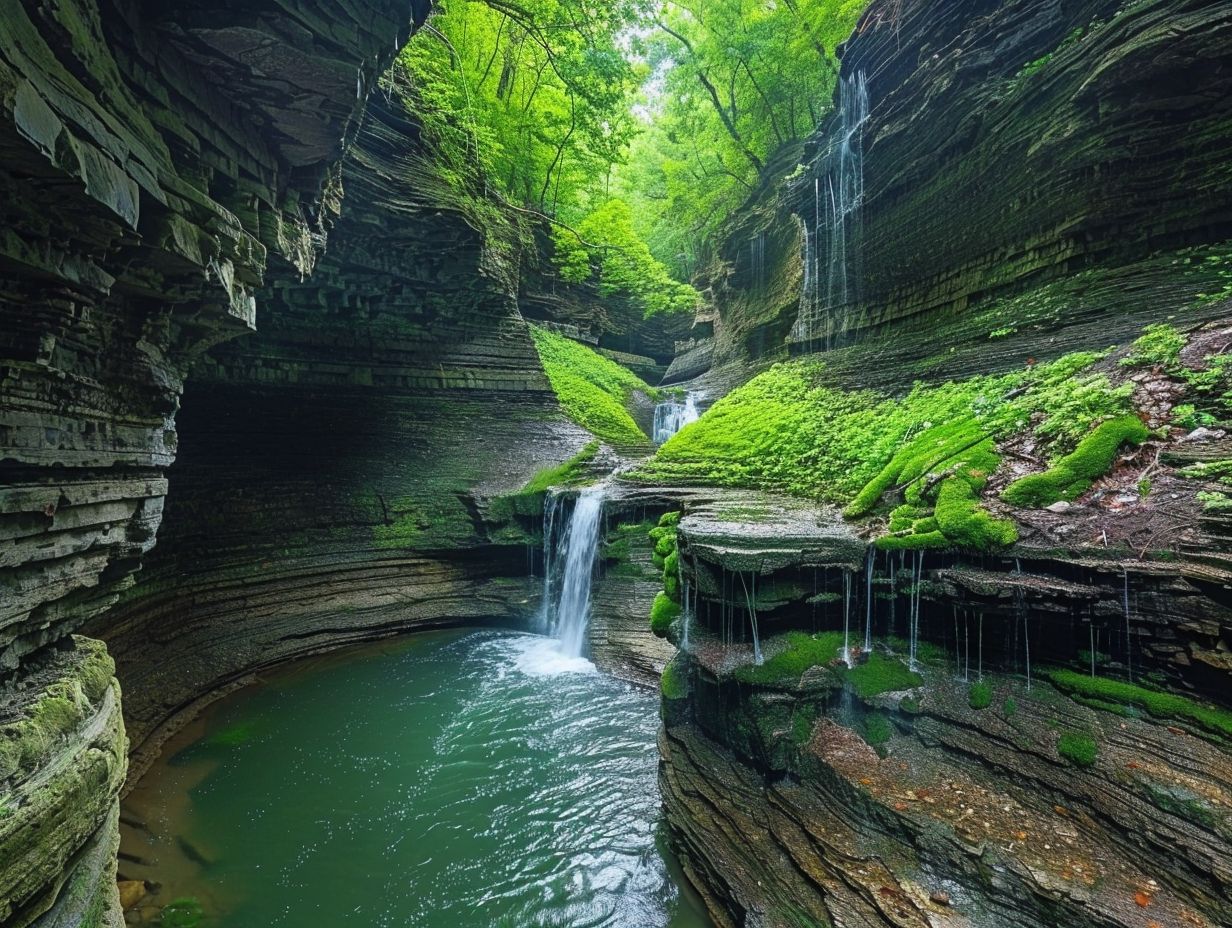Watkins Glen State Park, nestled in the heart of New York’s Finger Lakes region, is a natural wonder that boasts a rich and diverse array of wildlife. From the towering cliffs and cascading waterfalls to the serene streams and Seneca Lake, this park is a haven for a wide variety of animal species. In this blog post, we’ll delve into the fascinating world of Watkins Glen State Park Animals, uncovering the unique creatures that call this stunning landscape home.
Mammals of Watkins Glen State Park
Visitors to Watkins Glen State Park may be lucky enough to spot a variety of mammalian residents roaming the forest floor or scurrying along the rim trails. Some of the most commonly observed mammals in the park include:
| Animal | Description |
|---|---|
| White-tailed Deer | These graceful creatures are a common sight, often seen grazing on the park’s vegetation or cautiously making their way through the wooded areas. |
| Bobcats | These elusive feline predators are known to inhabit the park’s rugged terrain, though they are rarely seen by visitors. |
| Foxes | Red foxes and gray foxes can be spotted darting through the underbrush, hunting for small prey. |
| Raccoons | These clever and adaptable animals are often seen foraging for food, especially near the park’s campgrounds and picnic areas. |
| Chipmunks and Squirrels | These small, energetic rodents are a familiar sight, scurrying up and down the park’s trees and along the ground. |
Avian Wonders of Watkins Glen State Park

The diverse habitats within Watkins Glen State Park provide a haven for a wide variety of bird species. Birdwatchers and nature enthusiasts can delight in spotting the following feathered residents:
- Bald Eagles: These majestic birds of prey can sometimes be seen soaring over Seneca Lake or perched atop the park’s towering cliffs.
- Peregrine Falcons: These swift and agile falcons have been known to nest on the park’s sheer rock faces.
- Great Blue Herons: These stately wading birds can often be seen fishing in the park’s streams and ponds.
- Songbirds: A variety of songbirds, such as warblers, thrushes, and woodpeckers, can be heard and observed throughout the park’s forested areas.
Aquatic Life in Watkins Glen State Park
The park’s waterways, including the streams, pools, and Seneca Lake, are home to a diverse array of aquatic life. Visitors may spot the following species:
- Trout: Rainbow trout and brown trout are popular game fish that can be found in the park’s streams, particularly during the annual spring trout run.
- Landlocked Salmon: These large, silvery fish are also present in Seneca Lake, attracting anglers to the park.
- Pike and Bass: Other game fish, such as northern pike and largemouth bass, can be found in the lake and streams.
- Muskrats and Beavers: These semi-aquatic mammals are known to inhabit the park’s waterways, building their intricate lodges and dams.
Reptiles and Amphibians of Watkins Glen State Park
The park’s diverse habitats also provide a home for a variety of reptiles and amphibians. Visitors may encounter the following species:
- Garter Snakes: These common, non-venomous snakes can be spotted slithering through the park’s vegetation.
- Painted Turtles: These colorful turtles can often be seen basking on logs or rocks near the park’s streams and ponds.
- Bullfrogs: The deep, resonant croaks of these large amphibians can be heard echoing through the park, especially near the water’s edge.
- Salamanders: Several species of salamanders, such as the red-backed salamander and the spotted salamander, can be found under logs and rocks in the park’s moist, forested areas.
Unique Flora of Watkins Glen State Park
In addition to the diverse animal life, Watkins Glen State Park is also home to a variety of native plant species that thrive in the park’s unique environment. Some of the notable flora found in the park include:
- Milfoil: This aquatic plant, with its feathery, submerged leaves, can be seen in the park’s streams and ponds.
- Plantains: These hardy, low-growing plants with broad leaves are a common sight along the park’s trails and in its meadows.
- Stoneworts: These green, algae-like plants are found in the park’s waterways, providing food and habitat for aquatic creatures.
- Muskgrass: This submerged aquatic plant, with its distinctive whorled leaves, is an important component of the park’s aquatic ecosystems.
Responsible Exploration and Conservation
As visitors explore the wonders of Watkins Glen State Park, it’s important to remember that the park’s wildlife and natural resources must be protected. Visitors should follow all park regulations, stay on designated trails, and refrain from disturbing or feeding the animals. By practicing responsible and sustainable tourism, we can ensure that the Watkins Glen State Park Animals and their habitats are preserved for generations to come.
References:
– Watkins Glen State Park
– Finger Lakes National Forest
– New York State Parks Wildlife

